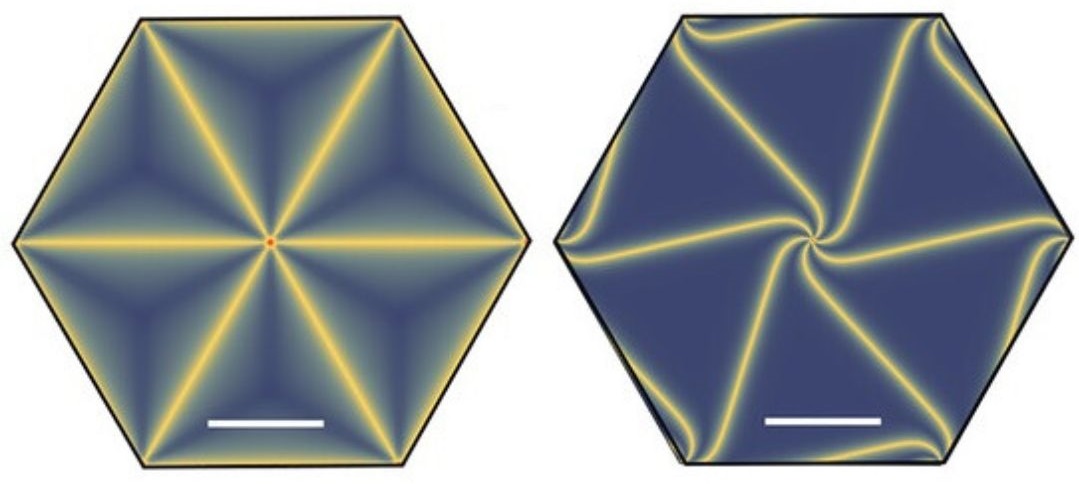Graphene is a sheet of carbon atoms arranged on a honeycomb lattice, with remarkable properties, including exceptional electrical conductivity. It is theoretically possible to obtain moiré patterns by stacking two sheets of graphene and exerting mechanical stress on just one of the two sheets. But until now, no one had succeeded in carrying out the experiment, or in studying this new associated physics.
By chance, researchers at PHELIQS/LATEQS [collaboration] were able to produce this graphene stack. Their process of freeing the graphene sheets from the silicon carbide substrate proved to be slightly incomplete, and a few carbon atoms of the graphene sheet in contact with substrate remained chemically bonded to silicon atoms in the substrate. This induces a biaxial stress, exerted only on the graphene sheet close to the substrate.
This bilayer graphene, in which one sheet is subjected to a biaxial stress and the other is not, produces a moiré that is different from that of the twisted bilayer (two stacked sheets, one of which is rotated with respect to the other) which has recently made headlines for its superconductivity.
The scientists were able to observe this novel moiré patterns using tunneling microscopy and to link a characteristic length of these patterns (200 nanometres) to the low stress exerted on the sheet close to the substrate. They then used this stress value to calculate the relaxation of some 3 million carbon atoms in the bilayer graphene. Calculations which reproduce well experiments, show that this reorganisation of the carbon atoms forms a giant atomic swirl !
The atoms rearrange themselves in such a way to minimise the energy of the bilayer graphene, and more precisely, to reduce to a minimum (almost to a point!) the region where the hexagonal lattices of the two graphene sheets are exactly superimposed. The result looks like a cyclone or spiral galaxy whose arms are associated with electronic states that are much sought-after in quantum physics (known as topological states).
Fundings: CEA PTC-instrum project DForm, ANR project Flatmoi (ANR-21-CE30-0029) and Science and Technology funding Council ST/V001116/1 (UK).

Figure: Stacking parameter for a structure relaxed from a moiré induced by a 0.1% purely biaxial heteroformation. Right: low-energy spiral soliton mode; left: metastable right-hand soliton mode. Scale bar: 100 nm. © CEA-Irig and Manchester Univ
Collaboration
- Cergy Pontoise University
- Manchester University
- Universidad Autonoma de Madrid
- Centre de Recherche sur l'Hétéro-Epitaxie et ses Applications CRHEA (CNRS)